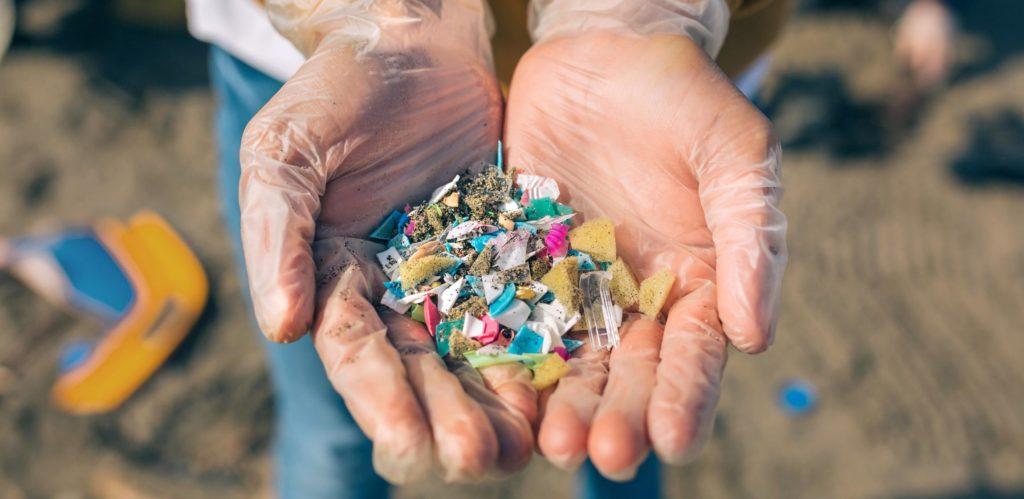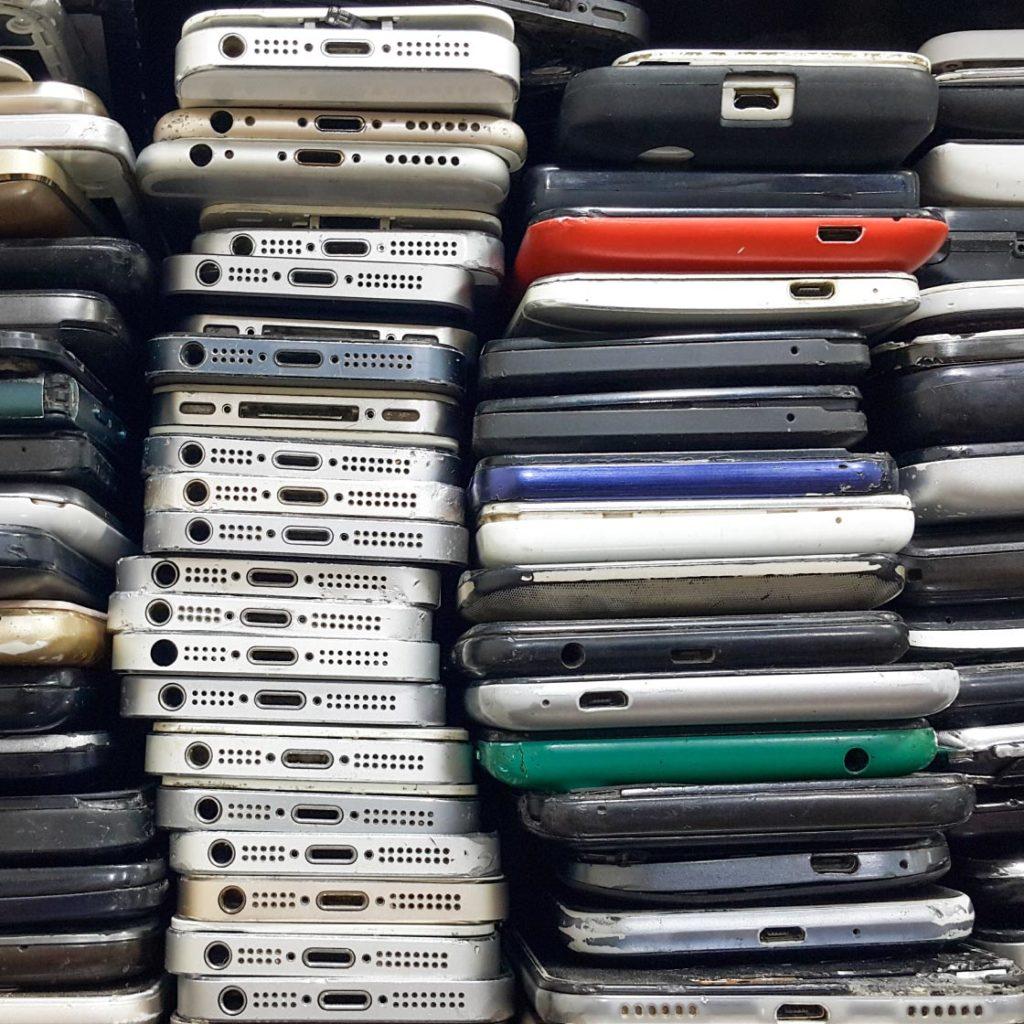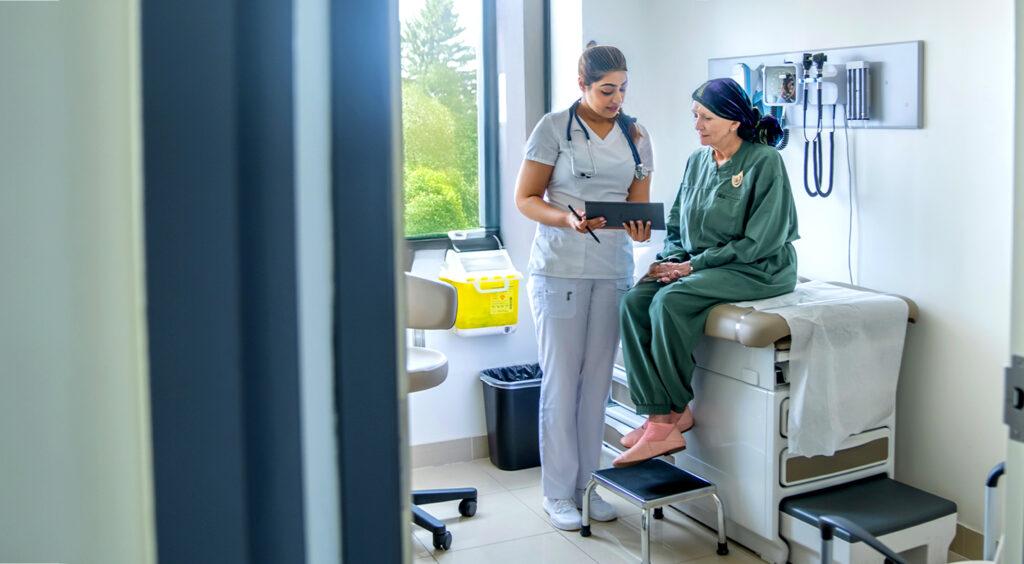Instead of shopping this Black Friday, consider curbing your consumption
By Carolyn Ali

With plastic in everything from computers to clothing, UBC researchers urge consumers to connect what we buy with what’s harming our oceans
Dr. Juan José Alava doesn’t own a cellphone. “My computer does everything a cellphone does,” he explains.
When he goes shopping, he doesn’t buy plastic bottles and never accepts plastic bags. “I tell the clerks, ‘There’s enough plastic in the ocean, I don’t need to take it in my hands.’”
A researcher in the Ocean Pollution Research Unit of UBC’s Institute for the Oceans and Fisheries, Dr. Alava has seen the damage that plastic inflicts on our environment and our collective wellbeing.
And as Black Friday kicks off the holiday shopping season, he and other UBC researchers are urging consumers to make the connection between what they buy and what eventually ends up harming our ecosystems—and our health.
Microplastics everywhere
While there’s now greater societal awareness around reducing single-use plastics like grocery bags and beverage containers, Dr. Alava says that many people don’t think about the amount of plastic that is processed for consumer items, from clothing to electronics to automobiles.
Many of these things are manufactured from primary plastic pellets or raw primary microplastics, which are particles measuring less than five millimetres in size. While only a fraction of these microplastics leak into the environment during the production and recycling process, it still adds up to trillions of plastic microfibres released globally each year.
Microplastics are also shed into wastewater through laundry.
“Most of the clothing we have today is made of microfibres like polypropylene or nylon,” he says. “Microfibres make up 80 to 90 per cent of the microplastics in the ocean.”
An Ocean Wise study found that 878 tonnes of plastic microfibres are released from Canadian and US household laundry through wastewater treatment plants every year.
“Microplastics have been found in many items we eat, and in drinking water. When we affect the health of the ocean, we affect our own health.”
Dr. Juan Jose Alava, UBC Institute for the Oceans and Fisheries
What affects the ocean affects us
Dr. Alava studies microplastics in marine food webs, where they are consumed by zooplankton, herring, salmon and other species. Those microplastics make their way up the food chain back to us.
“Microplastics have been found in many items we eat, and in drinking water. They’ve been found in the placentas of humans,” he says. “When we affect the health of the ocean, we affect our own health.”
As well as microplastics, there’s plastic rubbish like food wrappers, take-out containers, cigarettes and cigarette filters found littering our shorelines. Then there’s plastic bottles that take about 450 years to break down.
Dr. Alava explains that larger plastics like discarded fishing nets float in the ocean engaging in what is called “ghost fishing” because they entangle or kill sea turtles, marine mammals and seabirds as bycatch.


“The sea birds confuse the plastic pieces with food, and sea turtles confuse plastic bags with jellyfish,” he says. “They eat it and they feel full. But their stomachs are full of plastic, causing starvation and obstructing the gastrointestinal tract.”
Those are just a few of the effects that plastics have on the aquatic or marine environment. But Dr. Alava is focused on finding solutions to ocean pollution. Part of that lies with consumers, he says, who have the power to change their consumption habits and demand more sustainable products.
“We can substantially reduce the amount of plastic we use without affecting our quality of life. The question is, what do you use it for?”
Dr. Rashid Sumaila, UBC Institute for the Ocean and Fisheries
Thoughtful consumption
“There are a lot of things that we use that we don’t even realize contain plastics,” says Dr. Rashid Sumaila, a UBC professor and interdisciplinary economist at UBC’s Institute for the Ocean and Fisheries. “Awareness is crucial.”
For example, a third of vehicle parts are made of plastic, and plastic particles from automobile tires that blow off of roads into the ocean are actually a major source of microplastic pollution.
Dr. Sumaila also advocates more thoughtful consumption as a way to help improve the health of our oceans.
“To not use any plastic at all is really tough,” he acknowledges. “But we can substantially reduce the amount of plastic we use without affecting our quality of life. The question is, what do you use it for?”
For example, he says, we might prioritize plastic for things like personal protective equipment in health care. But instead of using single-use plastic bags at grocery stores, we substitute more durable plastic bags that last for years. “It’s about using plastic cleverly—economists would say ‘optimally’—so that the benefits it gives society is at least more than the cost.”
Consuming less is part of the equation.
“Thoughtful consumption is really important. You have to look at the whole plastic chain. That’s where the circular economy comes in.”
Recycling is part of the solution, but it’s nowhere near perfect.
In Canada, 87 per cent of plastic waste ends up in landfills or the environment. Only about nine per cent of plastic gets recycled globally, and the process itself requires energy (often fossil fuels) for everything from transporting materials to converting it into new products. “That’s why the beginning is important,” says Dr. Sumaila. “How much we take in is crucial.”
“There’s a bigger role to play for those who design, manufacture and drive the demand in the market. We need to design for recycling.”
Dr. Maria Holuszko, UBC Norman B. Keevil Institute of Mining Engineering
Reducing electronic waste
Dr. Maria Holuszko also urges people to keep their electronics as long as they’re functional.
The assistant professor at UBC’s Norman B. Keevil Institute of Mining Engineering acknowledges that the lives of electronics are getting shorter as software technology outpaces the mechanics of the gadgets.
That’s why finding ways to effectively recycle them is key.
“Electronics are an integral part of our lives,” she says. “We need these things but we have to make sure that they’re not wasted.”
Dr. Holuszko researches sustainable e-waste recycling, including working toward a zero-waste cellphone and recycling LED lamps. Globally, she says, we generate close to 57 million tonnes of e-waste annually. That’s growing about three to four per cent every year as demand for electronics increases in developing countries.


Electronic waste is made up of a wide variety of materials, including valuable metals and non-metal parts like fibreglass and resins. Only about 15 to 17 per cent of total e-waste is currently recycled.
“It’s a very complex mix of materials, and materials are not homogenous across products, so it’s very difficult to do proper recycling,” Dr. Holuszko explains.
Depending on the type of electronic, about 30 to 50 per cent of e-waste is plastic.
“With plastic, it’s cheaper and easier to produce something new rather than use recycled materials,” she says.
That’s why Dr. Holuszko believes we need to tackle the problem at the origin.
“There’s a bigger role to play for those who design, manufacture and drive the demand in the market,” she says. “We need to design for recycling.”
Consumers could then return the end-of-life product directly to the manufacturer, who would know exactly what’s in the product and how to recover all of the useful, valuable components. These include metals and minerals that are in short supply and high demand.
“Then there’s incentive for manufacturers to design for recycling,” she says. “They wouldn’t have to look for raw material anymore.”
In other words, manufacturers could also use secondary recycled products to build new products.
Dr. Holuszko notes that this would require greater co-operation among industry, supply chains and policy makers, who could add incentives for manufacturers.
Consumer demand for change
While the solutions to plastic waste are complex, consumers do have power to influence change.
As Dr. Alava says, we can reduce our personal consumption of plastic, urge others to do the same and push for more sustainable options.
“Individuals can also help determine what our businesses and governments do,” points out Dr. Sumaila. “It’s also about advocacy. Ultimately governments have the power to create the society we want to see.”
Carolyn Ali is a writer for UBC Brand and Marketing. This article was published on November 18, 2021. Feel free to republish the text of this article, but please follow our guidelines for attribution and seek any necessary permissions before doing so. Please note that images are not included in this blanket licence.


